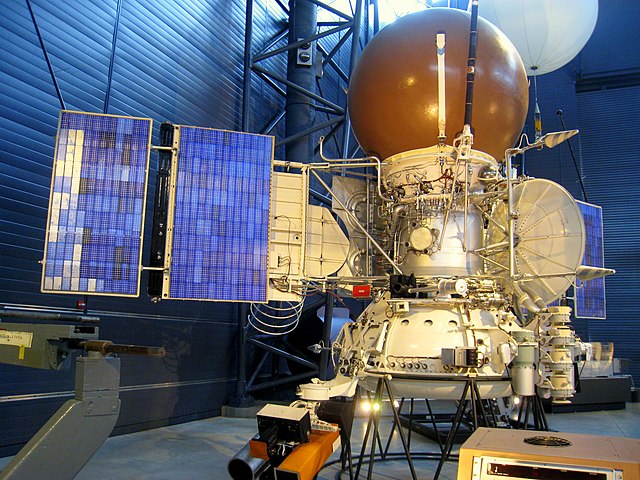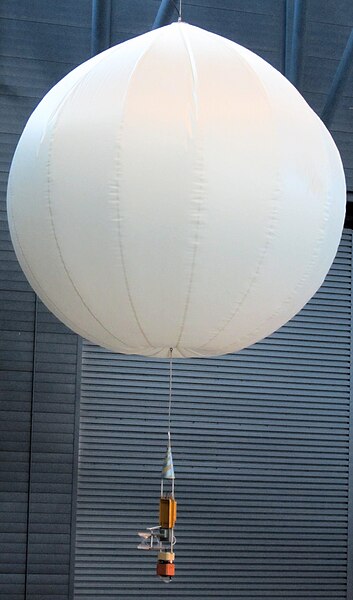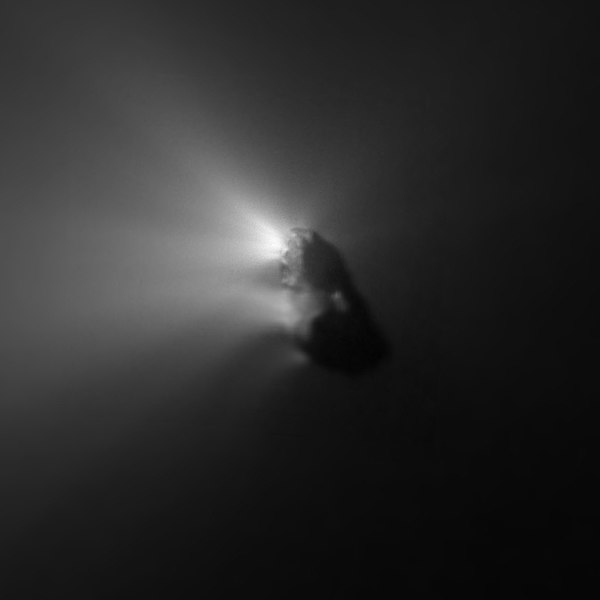The Vega program was a series of Venus missions that also took advantage of the appearance of comet 1P/Halley in 1986. Vega 1 and Vega 2 were uncrewed spacecraft launched in a cooperative effort among the Soviet Union and Austria, Bulgaria, France, Hungary, the German Democratic Republic, Poland, Czechoslovakia, and the Federal Republic of Germany in December 1984. They had a two-part mission to investigate Venus and also flyby Halley's Comet.
Vega mission description
A Vega probe bus on display at the National Air and Space Museum
Artist's impression of the Vega probe on Venus
Vega balloon probe on display at the Udvar-Hazy Center of the Smithsonian Institution. Photo by Geoffrey A. Landis.
Halley's Comet, Comet Halley, or sometimes simply Halley, officially designated 1P/Halley, is the only known short-period comet that is consistently visible to the naked eye from Earth, appearing every 75–79 years. It last appeared in the inner parts of the Solar System in 1986 and will next appear in mid-2061.
Halley's Comet on 8 March 1986
Orionid meteor originating from Halley's Comet streaking the sky below the Milky Way and to the right of Venus
The nucleus of Halley's Comet, imaged by the Giotto probe on 14 March 1986. The dark coloration of the nucleus can be observed, as well as the jets of dust and gas erupting from its surface.
Observation of Halley's Comet, recorded in cuneiform on a clay tablet between 22 and 28 September 164 BC, Babylon, Iraq. British Museum (BM 41462 Archived 19 April 2021 at the Wayback Machine)








